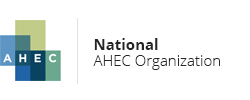About Crouse Community Center
Crouse Community Center is a 120-bed rural nursing home and rehabilitation center located less than a mile from the village center of Morrisville, NY. The facility backs up to rolling farmland and looks out on the SUNY Morrisville campus. The single floor building includes six wings with a series of courtyards and patios, which are visible from resident rooms. The non-profit organization is certified by the New York State Department of Health.
Challenges
Crouse Community Center is required to provide annual mandatory compliance training to approximately 210 staff members. I spoke with Patty Venette, RN, BSN, RAC-CT, SAFE, and Director of Education, Employee Health and Infection Control at the center about her compliance training process. Until last year, Crouse Community Center’s in-service training was done face-to-face and documented by paper sign-in sheets and paper quizzes. As many as 20 people from different departments might attend one training, with all that attendance information needing to be manually entered into an Excel spreadsheet. Venette then had to sort the data by department in order to record participation and create reports. The paper-based process was cumbersome, time consuming, and difficult to manage—challenges that were highlighted when Venette prepared staff evaluations. This prompted her and other members of the management team to look for an online training solution.
The Solution
After careful consideration, the organization chose InService Solutions for its tracking, reporting, and customization capabilities. One of the major benefits of InService Solutions, Venette explained, is the ability to customize courses. She is currently working on content for an “Active Shooter” scenario module, which will link to an informational video on a government website. As part of the module development, Venette asked the local sheriff’s office to review their policies and procedures so they can be aware of the latest safety practices. The sheriffs’ office is also working with them on a walk-through of the center so they can get a better understanding of what to expect should an incident occur. The Active Shooter training will be an in-person training session reinforced by the online training available through InService Solutions.
Venette plans to combine the new content with their current Workplace Violence and Sexual Harassment modules on InService Solutions, turning three related topics into one module. The customization functionality of InService Solutions gives facilities like Crouse Community Center the flexibility to personalize training modules to meet their needs. We can’t wait to see where Crouse Community Center takes InService Solutions next.





